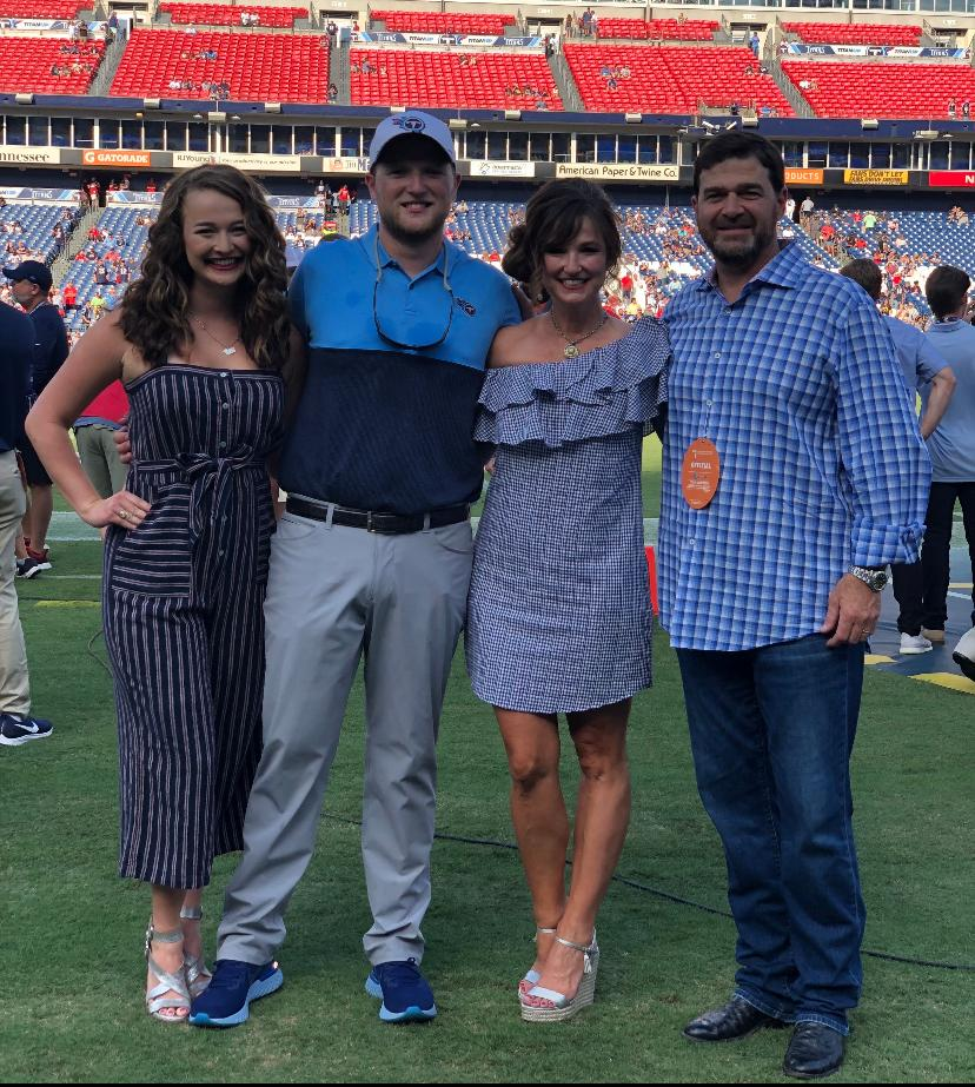Breast cancer survivor with epilepsy-inducing genetic abnormality seizure-free after two laser ablation surgeries


When Tiffeny Morrow was 40 years old, she started having strange episodes: She would feel heat in the pit of her stomach, and then her body would freeze into one position for a few moments, as she shook with fear.
The now 52-year-old mother of two initially thought they were panic attacks, triggered by the anxiety she felt over her breast cancer diagnosis in 2008, even after she went into remission the next year. But one day in 2012, when she had another episode and drove off the road with her teenage daughter in the car, Morrow became frightened enough to see a neurologist.
After meeting with two physicians, she was diagnosed with seizures and prescribed a cocktail of anti-convulsant medications. But the medications didn’t work, and Morrow’s seizures became more intense and more frequent, occurring five to 10 times a day.
She saw several different neurologists who prescribed her a variety of medications, but nothing worked. It got to the point where Morrow, who had experienced one-too-many scares behind the wheel, decided to quit driving altogether.
“It became a surreal situation that lasted far too long,” Morrow said.
In 2019, Morrow reached out to an acquaintance on Facebook who was posting about the work she was doing with some Houston neurologists and neurosurgeons. The friend recommended Morrow visit neurosurgeon Nitin Tandon, MD, professor, chair ad interim, and director of the epilepsy surgery program in the Vivian L. Smith Department of Neurosurgery with McGovern Medical School at UTHealth Houston.
After hearing Morrow’s story and reviewing her medical history during her appointment at UTHealth Houston Neurosciences, Tandon encouraged her to consider laser ablation surgery, a novel procedure he had recently begun offering patients.
However, Morrow was extremely apprehensive. Part of it, she conceded, was vanity: A decade before, she had been bald for her 40th birthday after shaving her head in preparation for breast cancer chemotherapy, and she did not want to be bald for her 50th birthday in November 2019. She also wanted to feel beautiful as mother of the bride for her daughter Robyn’s planned wedding in May 2020. Then, the COVID-19 pandemic took full force, giving Morrow another reason to delay surgery.
It wasn’t until one day in June 2020 that Morrow was sitting on her back porch and realized all of her excuses were gone. Frustrated over her years-long inability to drive and the moody, numb way her medication made her feel, she prayed for an undeniable sign that surgery was the right choice. About five minutes later, she received a phone call from Jessica Johnson, NP, with Tandon’s office.
“I hadn’t talked to her in months. It was an ‘oh, wow’ moment,” Morrow said. “I got chills, I got teary, and I told Jessica, ‘I have to make an appointment to come talk to y’all again before I chicken out.’”
In March 2021, a stereoelectroencephalography (SEEG) scan pinpointed the source of the seizures: periventricular nodular heterotopia (PVNH), a genetic abnormality in which nerve cells clump around the deep fluid-filled chambers inside the brain known as the ventricles. Most people with PVNH are women who present with epilepsy.
Many abnormalities like PVNH are thought to have a genetic origin, said Tandon, who is studying which genes could be responsible for PVNH.
While the condition begins taking shape when a person is just a few weeks old, Tandon said seizures don’t always start in childhood.
“You can have this abnormality and be fine. That’s the other question we don’t understand – what triggers these abnormalities so that seizures happen?” Tandon said. “It’s possible that the genesis of these seizures is gradual, but we don’t know why it can take decades for them to start.”
PVNH seizures can be unilateral, meaning they only occur on one side of the brain, or bilateral, meaning they occur on both sides of the brain. Because Morrow’s condition was bilateral, Tandon recommended she have two laser ablation surgeries to remove the clumps.
“The PVNH is deep inside the brain, and removing it surgically involves making a very deep, long cut in the brain that lines the entire ventricle,” Tandon said. “In Morrow’s case, we wanted to focus on one side of the brain at a time.”
Viewing the procedures as medically necessary, Morrow agreed to them. Tandon performed the first laser ablation on Morrow in April 2021, followed by the second in May 2021.
Morrow hasn’t had any seizures since her last surgery, and she’s driving again.
“This whole surgery experience was very spiritual for me,” she said. “I feel very blessed that I did it and very grateful to God and Dr. Tandon, who calmed me with his clear confidence in what he was attempting to do. My family will respect him for the rest of our lives.”
Today, Morrow continues to see neurologist Samden Lhatoo, MD, professor and John P. and Kathrine G. McGovern Distinguished Chair in the Department of Neurology with McGovern Medical School. After her surgery, Lhatoo began weaning Morrow off her medications, and she is on track to stop the last one this summer.
“She is progressing very well,” Lhatoo said. “PVNH was a condition that, before the advent of laser ablation surgery, was extremely difficult to treat. Even with treatment, most people did not have a realistic prospect of being seizure-free. But now, with the combined approach of an SEEG scan and laser surgery, we can tackle a very complex condition with a substantial promise of good results.”
Media Inquiries: 713-500-3030